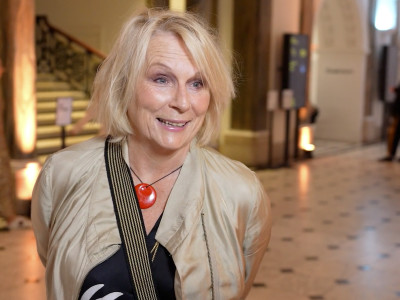
Meet the architects: Grafton
By Kate Goodwin
Published on 11 November 2013
“Buildings tell the stories of our lives in built form… We walk through and feel spaces with our whole bodies and our senses, not just with our eyes and with our minds. We are fully involved in the experience; this is what makes us human.”
I think these words from Shelley McNamara and Yvonne Farrell – founding partners of Dublin-based Grafton Architects – show why they were one of the first architects I approached to discuss the ambitions of the exhibition. The quote above is from a fascinating lecture they gave at the Royal Academy in March 2012, on Architecture as the New Geography (you can listen to the whole thing as part of our podcast series).
Their words echoed the central theme of the exhibition. It was an interesting time for Grafton, as they were simultaneously working on their installation for the Venice Architecture Biennale, (which won the Silver Lion Prize). Their first major exhibition project, it challenged them to express their ideas in new ways.
In Venice, they chose to look at the work of Brazilian Architect Paulo Mendes da Rocha and how it might offer insights to their own new university project in Lima. Through large photographs, and beautiful and tactile papier-mâché models, they wove magical connections which suggested as much about ideas of time and architecture as the specifics of the two projects.
Fragments, like ruins, allow space for the imagination to enter into play – you don’t give the whole story, so you provide space for the spectator to try to imagine what you are wanting to do, what might be intended.
Grafton Architects
The user – the spectator – is the ‘secret ingredient’ to architecture. Considered throughout the design, but present only in the finished structure, a building’s users complete it, rather than electricians, glaziers or roofers.
My discussions with Grafton have been some of the most stimulating and rewarding: they have really tackled the challenges I put to them. Our conversations traversed all manner of things, but in this post I wanted to share with you some of the philosophy that Grafton have expressed over the months as their ideas have coalesced. Next time, I’ll show you some of the places and spaces that have inspired their installation.
Your place at the table
What does feeling ‘present’ in a space really mean? Yvonne told me about an evening she and Shelley once spent in Zurich:
"We sat at a table that was incredibly long and narrow. It was made from a big tree trunk, so it was rough, but people were closer than normal, and there was a sense of a community along its length. When you come to a table you take off your jacket and sit down, so you are fully present; you have a cup of tea and a conversation, so it’s a shared experience. A table is an amazing platform."

She went on:
"Being present is trying to see the moments of change. It might just be the opening of a door, it might be the smell of brown bread – they say if you want to sell your house, you bake bread when people come and they’re more likely to buy it – it might be other senses too."
We moved on to discuss exhibitions more specifically. Thinking about what they might do in the Royal Academy, Shelley told me:
"I would like to start to think about galleries themselves. Very often within an exhibition there is a datum. Perhaps scale. For instance, it would be interesting to think about small things in a big space, or large things in small spaces; or about light; or a sense of movement in section and in plan. I like the idea of taking something which feels static and making it feel fluid, like a woven story, with a feeling of time. How might you take these very classical galleries, and by way of locating pieces, enable people see it differently. One exhibition which does this is the Peter Maerkli gallery in Tessin- where there is no artificial light, no services- if it’s dark outside, its dark inside; or cool, or hot. …. What was annoying today in the galleries was the humming in the background of the building – when you wanted the quiet."


